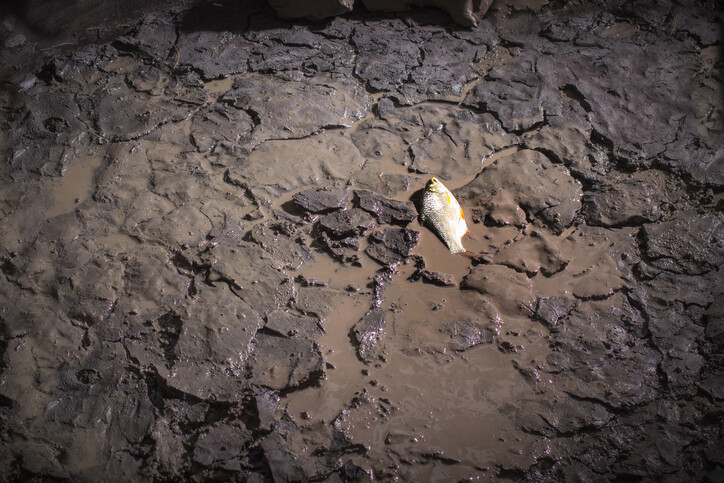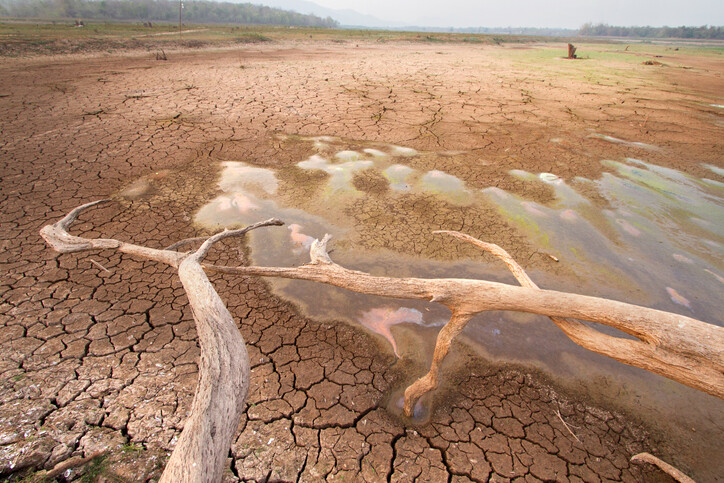
(From left) Doctoral student Hannah Yamagata, research assistant professor Kushol Gupta, and postdoctoral fellow Marshall Padilla holding 3D-printed models of nanoparticles.
(Image: Bella Ciervo)

The scale of the threats is massive: One million plant and animal species face imminent extinction due to human activity. That was the major finding of a report by the United Nations’ Intergovernmental Science-Policy Platform on Biodiversity and Ecosystem Services, a summary of which was released earlier this month.
The assessment, which took three years, involved 145 expert authors as well as indigenous and local knowledge, and reviewed 15,000 scientific and government sources, reveals unprecedented and accelerating risks for biodiversity and human life.
To shed light on the report’s implications, Penn Today reached out to experts across the University in a range of subjects, from psychology to sustainability, sociology to biology, asking for their primary impressions of the study and for advice on how to take action.
Dan Janzen, professor of biology and Thomas G. and Louise E. DiMaura Term Chair, Department of Biology, School of Arts and Sciences: This report simply reiterates what has been obvious to us globally and in Costa Rica since 1985 (when we started paying attention). Today it is old news, so the real takeaway is, why are humans so bent on destroying their nest? The answer is that those who are doing it are largely doing it on the backs of those who suffer the consequences: The person who lives next to and works all day in the pineapple plantation rather than the person who buys the pineapple in a Philadelphia grocery store. It has been the history of humans since the Pleistocene village and before for some to enslave others. You all know the drill. Upper class, middle class, and working class. What is the probability that the upper class will destroy that structure?
Katie Barott, assistant professor, Department of Biology, School of Arts and Sciences: The biggest takeaway is that the natural world is intricately linked to and necessary for our own physical and social wellbeing, and a new paradigm is needed that considers sustainability a central and necessary component of all societal decisions.
David Yaden, doctoral student, Department of Psychology, School of Arts and Sciences: Urgent action is required to help minimize the negative effects of climate change.
Dan Garofalo, director, Penn Sustainability: For me, the key takeaways are right at the top: ‘Human actions threaten more species with global extinction now than ever before’ and ‘Globally, local varieties and breeds of domesticated plants and animals are disappearing. This loss of diversity, including genetic diversity, poses a serious risk to global food security by undermining the resilience of many agricultural systems to threats such as pests, pathogens, and climate change.’
Daniel Aldana Cohen, assistant professor, Department of Sociology, School of Arts and Sciences: The report’s main takeaway is that, while carbon is the most urgent global environmental problem we face, it is just one part of an even more holistic threat to human wellbeing. Decarbonizing our energy system isn’t enough. We need to overhaul our entire economic system so that we no longer have a model of affluence that systematically destroys the basis for human life on Earth.
Julie Ellis, senior research investigator, Department of Pathobiology, School of Veterinary Medicine: What struck me most is the tension between feeding the world’s human population and conserving biodiversity. According to the report, land-use change has had the largest relative negative impact on nature, and agricultural expansion is the most widespread form of land-use change, with more than one third of the terrestrial land surface being used for cropping or animal husbandry. We urgently need innovative land-use strategies to reconcile feeding humanity and conserving biodiversity. And these strategies need to include the world’s most vulnerable populations.
Dan Janzen: The answer to this question depends totally on whether you live in Costa Rica, Pakistan, or Pennsylvania. The one I always give to Penn students is, ‘Get very good at what you do well and like doing well, get very rich at it in either money or capacity, and offer that to the conserved or conservable wildland that catches your fancy and is political/logistically most accessible to you.’ And if you cannot find one that can absorb your skills, our efforts in Costa Rican tropical conservation can always absorb such donations and put them to very good use.
David Yaden: Active support for policy changes and sustainable consumption seem most important, but some psychological factors may help to encourage these actions. My research has explored ‘the overview effect,’ a psychologically impactful experience that astronauts sometimes report after viewing Earth from orbit. A similar kind of mental shift, from a local to a global perspective, may help to motivate action on behalf of Earth as a whole.
Dan Garofalo: Reducing your carbon or ecological footprint will reduce pressure on the natural world and all the species that inhabit it. There’s no silver bullet, and there’s no secret lever that will protect ecosystems from our collective impact, but there are actions that we can take: Pay attention to where you live, how you commute, your purchasing/consumption habits, your travel footprint, and what you eat. Those five things tend to define your impact.
Joseph Kable, Baird Term Professor, Department of Psychology, School of Arts and Sciences: One thing people can do is prioritize these issues in their politics. Adequate tackling the issues raised in the U.N. report is going to require collective action at a large scale. While most people will say they are concerned about the environment if you directly ask them, very few volunteer environmental issues as one of the top concerns that drives their vote.
Daniel Aldana Cohen: The only remedy for the threats we face at the scale at which they confront us is massive political economic change. By far the most meaningful thing an individual person can do is join a social, political, or cultural movement aimed at transforming our political economy. No individual’s consumer choices and no group’s consumer choices are significant in the absence structural change.
Julie Ellis: I have three actions to recommend:
—Plant native species in your yard. Native plants are adapted to local environmental conditions, so they require fewer resources such as water. In addition, they provide habitat for birds, native pollinators, and many other species of wildlife. Many populations of native pollinators, including bumble bees and butterflies, are facing some degree of extinction risk. Planting native wildflowers can give these populations a boost.
—Reduce your plastic use, especially single-use items such as bags, straws, and flatware. There are a growing number of reusable and sustainable options for commonly used household products including toilet paper and toothbrushes made from bamboo and laundry detergent in biodegradable pods and compostable packaging. Talk to your local restaurants and coffee shops. Explain the problem of plastic pollution, and ask them to consider switching to sustainable, reusable materials. Make your voice heard and use your consumer power to pressure businesses to be more responsible in their resource use.
—Vote for representatives who support innovation in sustainable energy and renewable resources.

Katherine Unger Baillie , Michele W. Berger

(From left) Doctoral student Hannah Yamagata, research assistant professor Kushol Gupta, and postdoctoral fellow Marshall Padilla holding 3D-printed models of nanoparticles.
(Image: Bella Ciervo)

Jin Liu, Penn’s newest economics faculty member, specializes in international trade.
nocred

nocred

nocred